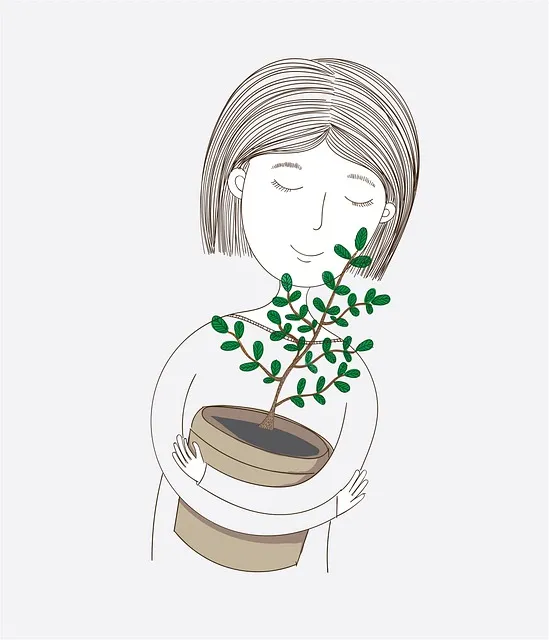
Having a garden in front of my house and the freedom to walk among the plants awakened in my conscience as a child the curiosity to know about these amazing beings that seemed oblivious to what was going on around them.
Sometimes I wondered if they were alive. I would come close to smell their leaves and flowers, and when it rained, I liked to see the drops of water sliding on their leaves until they reached the ground. I imagined that they were happy when it rained. Could it be that the plants feel cold, Could it be that when I carelessly run among them, break a branch, or tear off a leaf or a flower, they feel pain? Those were some of the thoughts that came to my childish mind.
My mother had some plants planted in planters in the backyard of the house, and it was an event when any of them bloomed, especially the Lady of the Night, a species with flowers of strong and sweet aroma that opened its petals at midnight to release its spell only for a few hours to close and dry in the early morning light.
A short but exciting moment that my mother could not miss and that unique and special night, there she and I were admiring the beautiful flower opening its white petals and getting intoxicated with its aroma.
"How beautiful it is! Don't you think so, daughter?"
And I answered her ecstatically and without taking my eyes off the flower so as not to miss any detail of that special moment.
"Yes, mom, it is very beautiful".

As the years went by, my desire to learn about plants increased, and that led me to choose a career that would give me knowledge not only about them but also about how to grow them. So I chose Agronomy.
Far away from home, I entered the world of plants in a place surrounded by the most exuberant vegetation I had ever known. The botanical garden was the place where I spent hours struggling to learn the names of each of the species that had been planted there. Trees, shrubs, and herbs, some brought from other regions of the world. On small plaques were written their names and place of origin
Since I came from the city, most of the plants were unknown,unlike my fellow students coming from the plains, the Andes or the south of the country.
I felt that my knowledge were very limited and that is why I made more of an effort.
With my friends, I would walk around the agronomy field, observing the plants and learning their names.
We climbed the hill that surrounds the valley, where we could find xerophytic plants with their stems full of leaves transformed into thorns, climbing plants that climbed up the trunks, and large trees.
It was a learning experience where we also had fun. But I also learned that plants have defense mechanisms. that can be painful.
On one of these field trips, I brushed my arm against a plant with heart-shaped leaves that had many thorns.
"Oh that plant stung me" and I looked at my arm that was red.
"It is pica pica, its thorns are stinging", my friend told me, he had a better knowledge of plants because he had grown up in the countryside.
"That's how you learn, you know you can't touch the pica pica or Guaritoto". It was as his logical comment.
The most surprising moment during the study of plants occurred in the practice of plant anatomy. As each of the students of the course sat on the benches on a long, white-painted table in front of the windows through which the botanical garden could be observed, the teacher asked us to open a wooden drawer with its key that each student had in his place and to take out the microscope.
"This instrument will allow them to observe what their eyes are not capable of. They are going to see what the inside of the plant looks like, from its cells to its different tissues".
That class it opened up a surprising world seen through magnifying lenses. Ordered structures, each designed to fulfill a function within the plant. Cells arranged according to the shape of the organelle, flat or cylindrical—link to each other, communicating through living matter. Beautiful colors to the eye, like the green of chlorophyll.
At that moment I was able to satisfy my childhood curiosity and I understood that plants are wonderful living beings. Their structure could not be more perfect.
This was the beginning of a profession that I loved since I started studying and that has its center in plants because they are the source of life.
Years later, during a visit I made to my mother in our family home, I went to the patio to see her plants as usual. I found it desolate, there was only a sabila plant in one corner.
"Mom!, what happened to your plants?", I asked her in amazement.
She answered me with a voice between sad and defiant, as if she wanted to tell me that she did not accept any kind of reproach.
"Some I gave away, and others died because I could no longer take care of them".
I felt partly responsible that this had happened and sad for my mother because I knew how much she loved plants. She had been left alone. My father had died and her daughters no longer lived in the family home, we only came to visit.
The plants somehow sensed my mother's sadness and abandonment. They stopped receiving her good energies through her words of love and care. Only one plant had survived. That answered the question I had been asked since I was a child.


